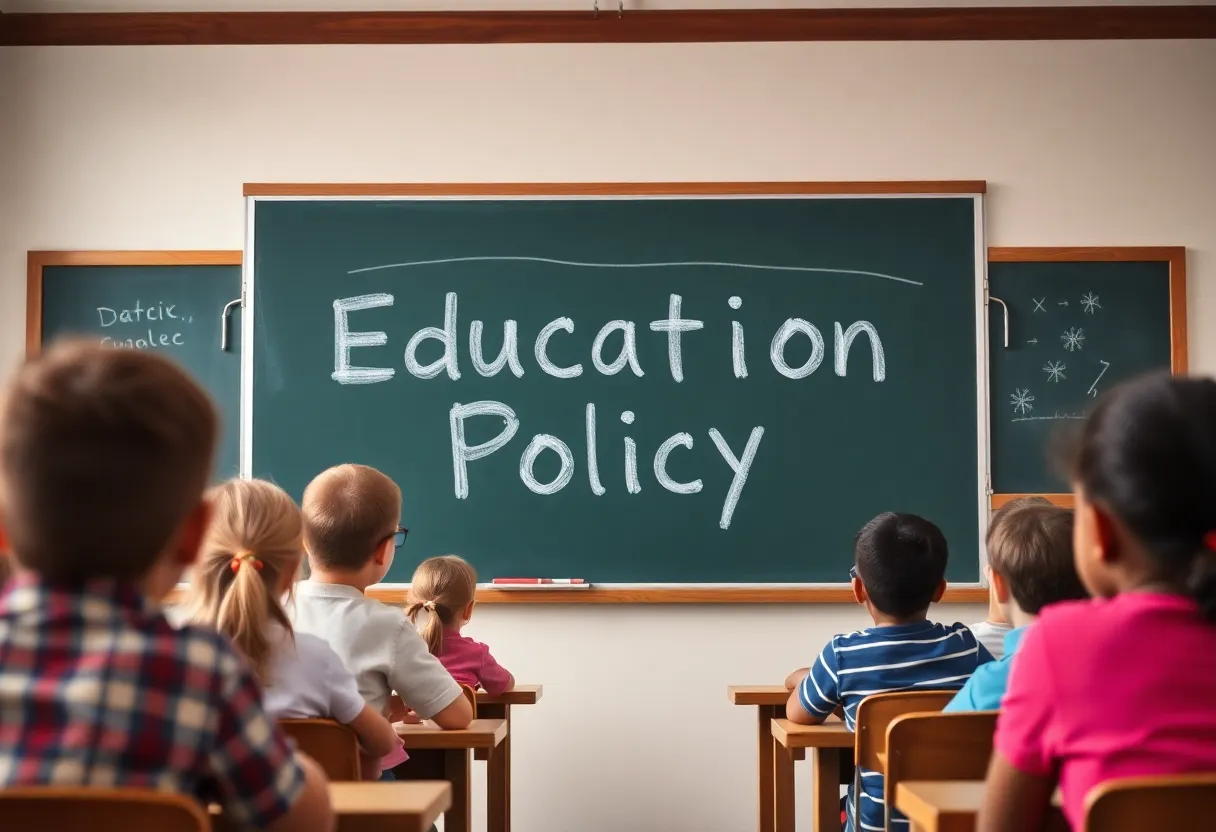News Summary
In a significant policy change, President Donald Trump signed an executive order to dismantle the U.S. Department of Education, transferring control back to states. This move, which could lead to funding cuts and disrupt federal support, has raised concerns among education leaders about the potential impact on student resources and access to quality education. As the situation develops, questions arise about the future of educational funding and support for vulnerable populations across the country.
Atlanta, GA – Major Shift in Education Policy as Executive Order Signed
In a bold move shaking up the landscape of American education, President Donald Trump has signed an executive order aimed at dismantling the U.S. Department of Education. This surprising action, which took place on Thursday, sets the stage for a potential overhaul of how education is managed across the country.
The Administrative Shift
The executive order instructs Education Secretary Linda McMahon to initiate the necessary steps for closing the department and transferring control of education back to states and local communities. This is no small feat, as the Department of Education was established only 44 years ago in 1979, and its dissolution would likely require an act of Congress – an undertaking fraught with challenges.
Since taking office, the Trump administration has already made significant changes to the department, including slashing its workforce by half and revamping many of its operations. Additionally, efforts to streamline could see contracts that were labeled “woke” and wasteful scrubbed from the books, as part of an initiative led by Elon Musk’s Department of Government Efficiency.
Understanding the Department’s Role
To appreciate the scope of this change, it’s important to understand what the Department of Education does. It plays a crucial role in managing student loans, overseeing Pell Grants, and disbursing federal financial aid to colleges and schools. With about $1.5 trillion in student loan debt affecting over 40 million borrowers, its impact is felt far and wide.
Currently, approximately 14% of public school budgets come from federal sources, and many institutions depend heavily on financial support from the government. The department also supervises essential programs, such as Title I funding that aids low-income students and resources for students with disabilities.
Potential Funding Cuts Ahead
Trump’s executive order signals a shift that could lead to cuts in federal funding for schools and colleges that promote certain curricula, particularly concerning critical race theory and transgender issues. This could pose significant challenges for states like Georgia, where the education budget utilizes around $2.2 billion in federal funds, making up about 16% of the total budget, with some rural districts relying on up to 30%.
Education leaders in Georgia are expressing grave concerns. They worry that dismantling the department could result in serious disruptions in funding and essential support for vulnerable student populations. While Trump has assured that Pell grants and Title I funds will be preserved and redistributed to other agencies, officials fear that this change may come with potential delays and interruptions in service.
The Local Response
School districts such as Fulton County Schools and Cobb County Schools are keeping a close watch on developments but have not yet reported any immediate changes. The uncertain future is a cause for concern, especially given the significant reliance on federal resources for their operations.
Amid the shifting landscape, Georgia Republicans are largely in favor of Trump’s initiative to return educational authority to states. In contrast, state Democrats argue that this change would worsen access to quality education, thereby harming student opportunities and further undermining equitable education.
What Lies Ahead
As the executive order unfolds, the future of educational functions and funding remains unclear. Will states be prepared to take on additional responsibilities? Can they ensure that the needs of all students are met, especially those who require the most support?
This unfolding situation is not just a matter of administrative policy; it touches the future of education for millions of American students. The journey forward will undoubtedly require careful navigation and teamwork among various educational entities.
Deeper Dive: News & Info About This Topic
HERE Resources
Georgia Lawmakers Revise Education Funding Formula After 40 Years
Boise State University Under Investigation for Race Practices
Georgia Lawmakers Address Education Funding for Low-Income Students
Atlanta’s Education System Faces Calls for Federal Oversight
Georgia Senate Advances Bill to Ban DEI Programs in Education
Buffalo Grove Students Excel in Academics and Community Engagement
Georgia Families Gain Access to New Scholarship Program
Atlanta Rallies Unite Against Trump’s Policies
Trump Signs Executive Order for Federal Workforce Reduction
Georgia Legislators Seek Changes to Education Funding Formula
Additional Resources
- Atlanta News First: What the U.S. Department of Education Actually Does
- Wikipedia: U.S. Department of Education
- Fox 5 Atlanta: Trump’s Executive Order and Georgia’s Education Leaders
- Encyclopedia Britannica: U.S. Department of Education
- Georgia Recorder: Georgia House Prepares for Potential End of U.S. Department of Education
- Google News: Department of Education
Author: STAFF HERE ATLANTA WRITER
The ATLANTA STAFF WRITER represents the experienced team at HEREAtlanta.com, your go-to source for actionable local news and information in Atlanta, Fulton County, and beyond. Specializing in "news you can use," we cover essential topics like product reviews for personal and business needs, local business directories, politics, real estate trends, neighborhood insights, and state news affecting the area—with deep expertise drawn from years of dedicated reporting and strong community input, including local press releases and business updates. We deliver top reporting on high-value events such as vibrant music festivals like Shaky Knees and Music Midtown, major cultural celebrations including Dragon Con and the Atlanta Film Festival, and iconic sporting events like the Peachtree Road Race. Our coverage extends to key organizations like the Metro Atlanta Chamber of Commerce and the Atlanta Convention & Visitors Bureau, plus leading businesses in logistics, beverages, and retail that power the local economy such as Delta Air Lines, The Coca-Cola Company, and The Home Depot. As part of the broader HERE network, including HEREAugusta.com and HERESavannah.com, we provide comprehensive, credible insights into Georgia's dynamic landscape.





